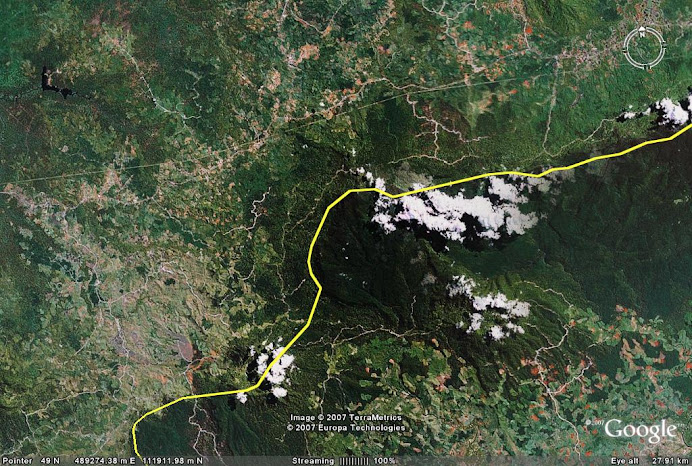In 2003 I interviewed many elderly people in Negeri Sembilan to find out what happened during World War 2, i.e. the Japanese Occupation Period of Malaysia. They told me that,
.....in the villages, the Japanese army undertook some measures to continue rice production by installing irrigation and drainage for the sawah to ensure continuous supply of their staple food, rice. They introduced a variety of rice, which the villagers aptly called padi Jopun (Japanese rice), for the villagers to plant.
The Japanese rice variety had shorter stalks than the local varieties, therefore the villagers had to adopt the long-handle sickle (sabit). Before the Japanese, the villagers used the traditional hand-sickle (tuai) to harvest the local rice varieties....
Thursday, October 25, 2007
Friday, October 19, 2007
my grandfather was an anglophile
Well he had to be.
I never got to know him because he died many years before I was born. In fact he died when my father, his son, was only three years old.
Unlike my father who attended a sekolah melayu, my grandfather went to a sekolah inggeris back when malaysia meant Malesia. Then he became a rubber superitendent in Muar, working for the English planters there.
He had to be an anglophile to be a rubber man in those days.
I never got to know him because he died many years before I was born. In fact he died when my father, his son, was only three years old.
Unlike my father who attended a sekolah melayu, my grandfather went to a sekolah inggeris back when malaysia meant Malesia. Then he became a rubber superitendent in Muar, working for the English planters there.
He had to be an anglophile to be a rubber man in those days.
Thursday, October 18, 2007
NON-INDIGENOUS PLANTS AND INDIGENOUS PEOPLE
An excerpt from a paper I wrote recently:
"In a recent study on the uses of non-native plants by Malay villagers in Negeri Sembilan, the author found that these villagers, who were living close to secondary forests, had been for several generations using non-native plant species for ‘traditional’ medicine and foodstuffs. While some of these plants were planted around the homegardens for household use, many non-native plants were common in the secondary forests and had long acquired local names. On the one hand, this incorporation of non-native species in the local traditional knowledge is anthropologically interesting because it demonstrates the resilience of indigenous peoples. On the other hand, it raises concern that the challenge to stop the spread of non-native species may be very difficult."
And, a poster that I submitted for a competition at the university last year (it won a bronze medal):

"In a recent study on the uses of non-native plants by Malay villagers in Negeri Sembilan, the author found that these villagers, who were living close to secondary forests, had been for several generations using non-native plant species for ‘traditional’ medicine and foodstuffs. While some of these plants were planted around the homegardens for household use, many non-native plants were common in the secondary forests and had long acquired local names. On the one hand, this incorporation of non-native species in the local traditional knowledge is anthropologically interesting because it demonstrates the resilience of indigenous peoples. On the other hand, it raises concern that the challenge to stop the spread of non-native species may be very difficult."
And, a poster that I submitted for a competition at the university last year (it won a bronze medal):

Heritage Matters!
Heritage Matters!
In Malaysia, heritage is now in serious contention.
A case in point is the demolition of a leprosia recently to make way for a medical school . The supporters of the demolition work claimed that the destroyed buildings had no heritage or historical value (as reported in a local daily). They also thought out loud that building a medical school was more important than preserving a leprosia.
The built environment is one thing, the natural environment is quite another. There have been for many decades campaigns against deforestation in this country. But if you look up at the hills above you, you'd see signs of deforestation.
So in the spirit of Malaysia boleh, Heritage Matters!
So much more so now than ever!
In Malaysia, heritage is now in serious contention.
A case in point is the demolition of a leprosia recently to make way for a medical school . The supporters of the demolition work claimed that the destroyed buildings had no heritage or historical value (as reported in a local daily). They also thought out loud that building a medical school was more important than preserving a leprosia.
The built environment is one thing, the natural environment is quite another. There have been for many decades campaigns against deforestation in this country. But if you look up at the hills above you, you'd see signs of deforestation.
So in the spirit of Malaysia boleh, Heritage Matters!
So much more so now than ever!
Subscribe to:
Posts (Atom)
